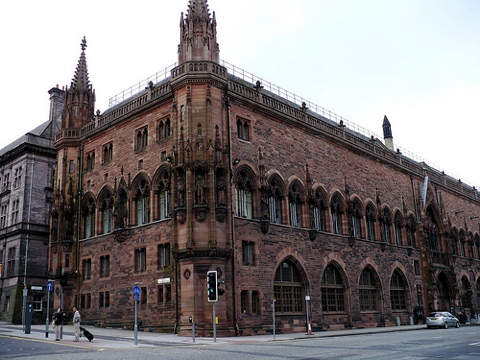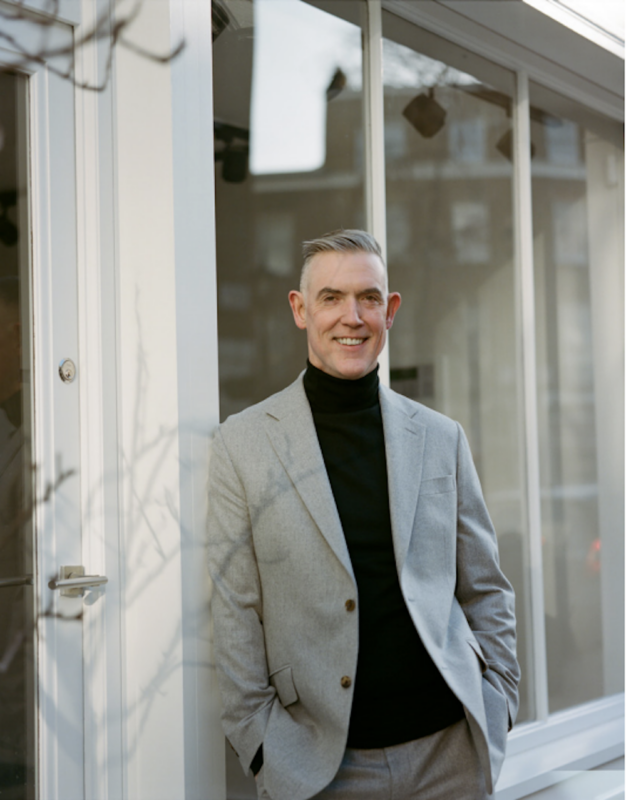
The Big Man, just up from the coal mine, looks fit to burst with mirth. The Newhaven fishwife, in her striped skirt, presents a triumphantly empty basket. In the factory, the 19th-century cloth weavers pause from their labours before the camera’s protracted gaze, but the child in the Glasgow slum cannot keep so still. He leaves a trace of himself, a little shivering ghost peeping out from a doorway in Close, No 46, Saltmarket.
The overlooked, the forgotten, the marginal and the nameless: these people of Scotland’s past (and present) now take their place for the first time in the newly remade Scottish National Portrait Gallery. It is a radical change, and strikingly democratic. It may also be the most significant of all the many alterations made since 2009 to that wallflower of a museum in Queen Street.
The Scottish National Portrait Gallery has never been fully loved, at least not compared to the National Gallery, the Museum of Scotland or the Scottish National Gallery of Modern Art I and II. The world’s first purpose-built portrait gallery – funded by the Scotsman‘s proprietor when the government wouldn’t stump up the funds – opened in 1889, a huge neo-gothic edifice of red sandstone that more resembles an ecclesiastical building than a museum.
Inside, it could seem sepulchrally dark, the great hall mainly notable for its austere brickwork, the upper floors disorientating with their false ceilings and mysteriously blocked-off doors. The carpets (such as they were) tended to trip you up. It always felt a bit heavy on the Scottish lairds, a bit light on the moderns and it did not contain what is surely the nation’s most famous portrait, Henry Raeburn’s The Reverend Robert Walker Skating on Duddingston Loch, which seemed to say it all.
Some of the portraits were enthralling, and the temporary shows could be excellent but the SNPG came to stand, in certain quarters, for superlative cheese scones. Growing up in Edinburgh, I remember hearing it acidly referred to as the overflow tearoom to Jenners. But in the past two years the building has been completely remodelled, floors and walls rearranged, small galleries created, large galleries beautifully brightened with LED systems and the plentiful daylight now entering through the new roof. The Museum of Antiquities has moved out, opening up 60% more space. And its excellent library has been brought wholesale from the top floor to the centre of the building, filled with wonderful sculptures and strange curiosities, including the death masks of Voltaire and grave robbers Burke and Hare. The library is now open to the public. And that is as symbolic as the 2,000 gold stars that now twinkle in the once-dour great hall. It turns out that they were always there in the background, but just needed some attention. The museum has opened up, brought its portraits – its people – out of the shadows.
So it now shows, for instance, not just the textbook Mary, Queen of Scots but images of her confidantes, husbands, advisers and detractors, notably her nemesis John Knox, to present a more intimate sense of her life. It gives you not just the 18th-century painter Allan Ramsay, in self-portrait, but his father, wives and many friends (including the philosopher David Hume, off-duty in a velvet cap to keep his bald head warm) so that his milieu, as well as the evolution of his style, emerges.
And nearby you will find Rousseau, painted by Ramsay for Hume when the Scot brought the Frenchman to Britain to escape persecution in 1765. And Bonnie Prince Charlie, escaping Scotland for the continent, sketched by Ozias Humphrey in 1776 as a dropsical old drunk in whose bloated face you can nonetheless see traces of the Young Pretender.
Connections and cross-connections develop everywhere. Here is the humble likeness of James Wilson, the Lanarkshire weaver who found fame as one of the Radical Martyrs, hanged for protesting against unemployment in 1820; and the grandiloquent portrait of the hanging judge. Here are the fishwives of Hill and Adamson’s famous calotypes near an oil portrait of the Scottish suffragette who would bring their successors to protest in London.
Portrait pantheons rely on words as well as images. You read of John Campbell, cashier to the ultra-loyalist Royal Bank of Scotland, who brazenly cashed £6,000 for the Jacobites in 1749. You learn how the Enlightenment philosopher Adam Ferguson influenced Karl Marx, how the geologist John Hutton proved in the late 1700s that the Earth must be more than 6,000 years old, as popularly believed.
Sometimes the wall texts make too much of the biography, downplaying the picture for the person. Nothing is made of the stunning little still life of rocks and fossils in Raeburn’s painting of Hutton, for example, or the amazingly free brushwork in David Wilkie’s self-portrait.
The SNPG should not be so timid about its paintings. From Nicholas Hilliard’s devastatingly subtle James VI and I to Wyndham Lewis’s hieratic Naomi Mitchison, scowling impatiently, the museum is full of great works of art.
On the other hand, the new inclusivity allows for some real revelations. The room devoted to Scotland’s first portrait painter fills the imagination. George Jamesone (c 1589-1644) studied with a decorative painter in Aberdeen. The SNPG has a fragment of the Libyan Sibyl he painted for a Burntisland house, later home to Mary Somerville, 19th-century scientist.
Jamesone’s portraits are hardly Van Dyck, not surprising given the isolation of these early painters. But his self-portrait – leaning forward, alert and highly attentive as if dwelling on your every syllable – is a little wonder.
The new photography gallery introduces the 19th century as never before: schoolboys, crofters, salmon poachers, ladies in long skirts scaling Salisbury Crags. Thomas Annan’s Saltmarket series is the first slum record and there are other deservedly famous images, most breathtakingly AG Buckham’s aerial view of Edinburgh Castle as a sceptred Camelot ringed with silver clouds.
Indeed landscapes have a heavy presence, as if the SNPG regarded them as a form of portraiture by other means. That may be true of Graham Fagen’s affecting video Missing, which searches wastelands for lost children. But it is arguable and distorts the display. Anyone looking for Robert Louis Stevenson, Charles Rennie Mackintosh or JM Barrie may be dismayed to find them hidden in a side-room of the cafe.
It is not that the curators regard these paintings as upscale decor: I imagine they believe more visitors will look at them here than ever before. For this is a museum of and for the people, Scotland’s family album, from the last crofters on St Kilda’s to the latest immigrants. Everyone should feel some connection with the thousands of faces on show.
You can argue with the cast list all you like: Gerard Butler but not John Logie Baird? The 20th century is particularly bizarre, but a museum can only work with what it has. I wish this one had portraits by Robert Colquhoun, James Cowie or Joan Eardley (to name only three) and the great film works, say, of John Grierson and Margaret Tait. But now that the gallery is so beautifully renewed perhaps more loans and donations will follow, and even without them the experience is rich, deep and enlightening: just as you would expect from Scotland.
guardian.co.uk © Guardian News & Media Limited 2010
Published via the Guardian News Feed plugin for WordPress.









